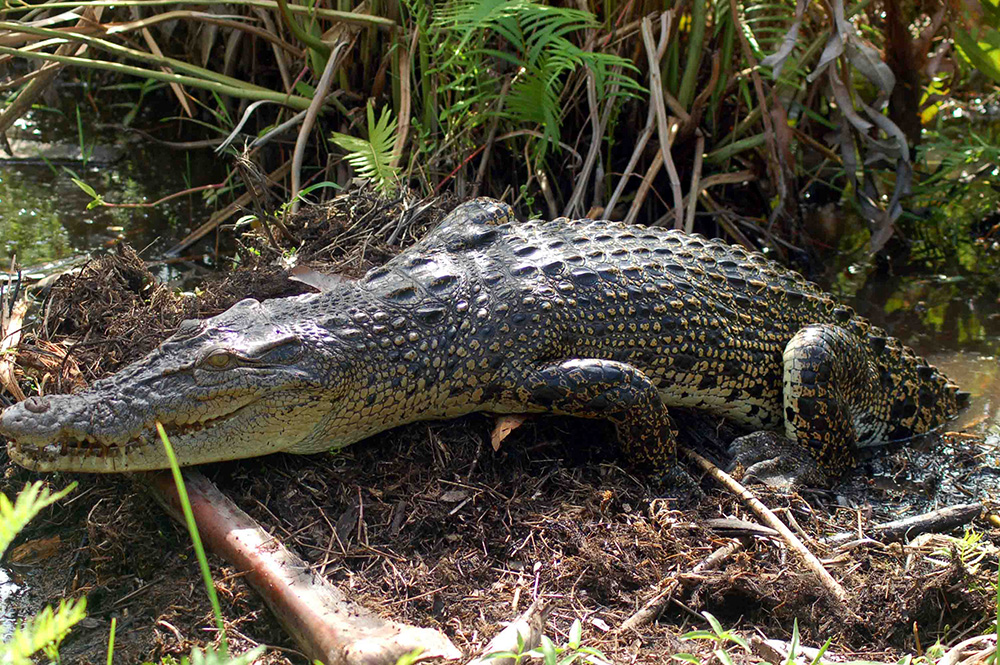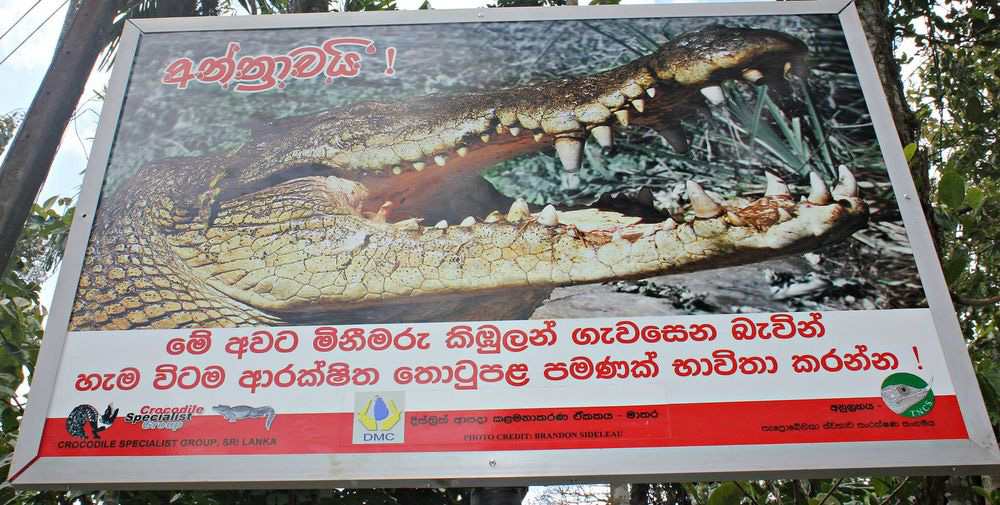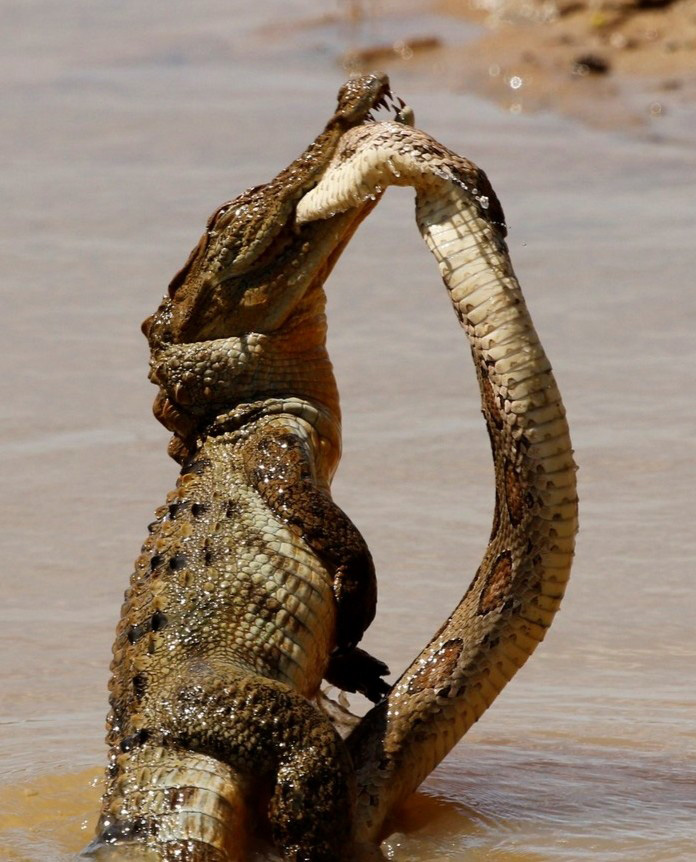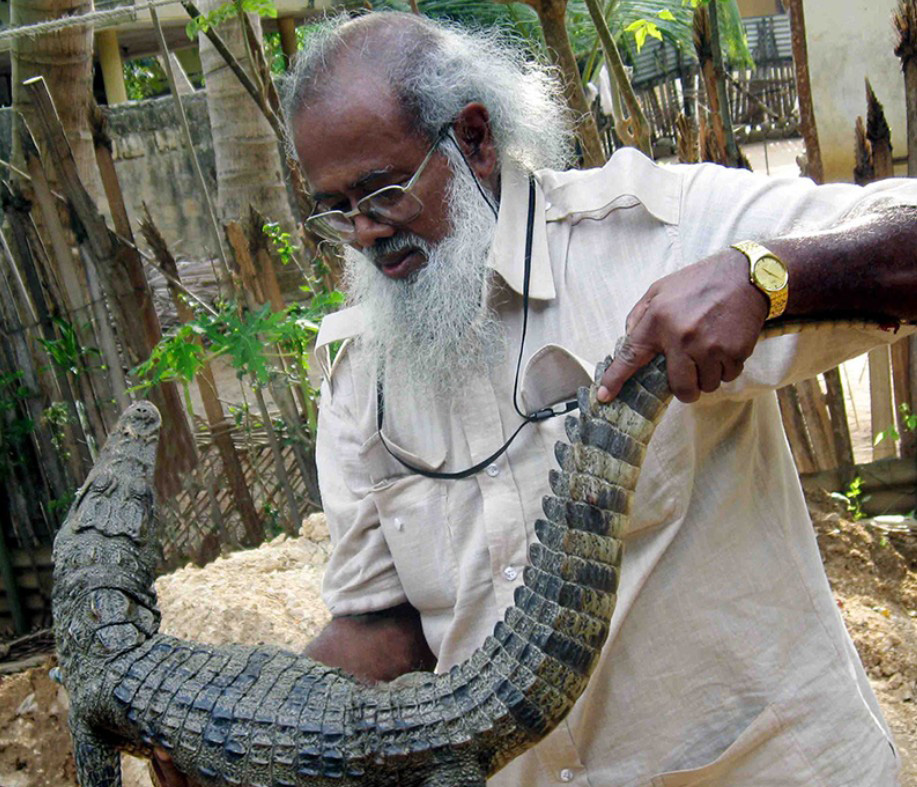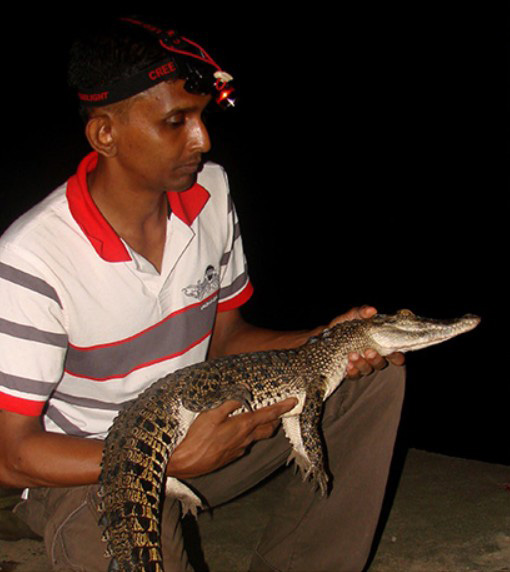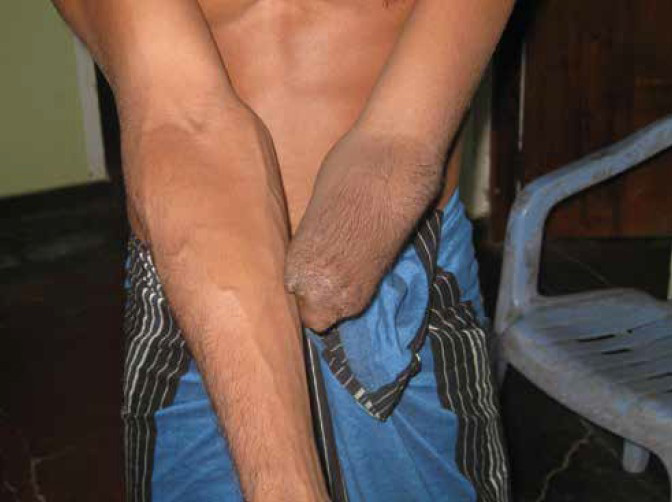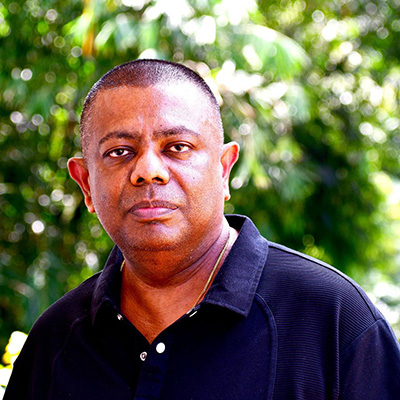Features
More on the Legal Drafgtsman’s Dept. and those who adorned it

Excerpted from a Cabinet Secretary’s Memoirs by BP Peiris
(Continued from Apr. 9)
Mervyn was succeeded as Legal Draftsman by P. C. Villavarayan, a classical scholar from Oxford and a great gentleman, so polished in his manners that he never liked to hurt anyone else’s feelings. He always had a Greek and a Latin book on his table: Martial’s Epigrams, Vergil, or the Greek Anthology to check up on quotations. Apart from being a scholar, he was a philosopher and his philosophy was obviously based on and influenced by his classical training.
He was never worried; he was never flurried; and he never seemed to be in a hurry. His ordinary letters were short essays in English, polished and cultured. He was the politest of men; but when the occasion demanded, he could be the firmest also. He had integrity and strength of character and was not prepared to knuckle down to others.
When I started as a temporary draftsman, P. C. V. was asked to supervise my work. He went out of his way to help me. I worked in his room and we lunched together in an ante-room. There has always been a camaraderie among the legal profession and age did not seem to count. I had rice and curry from home. He existed on four cheese sandwiches, two plantains and an apple.
His lunch was the same every day and, as if his doctor had prescribed it, he always consumed the three items of his diet in the order mentioned, the apple coming last. He gave no explanation for this rigid habit—how could he?—for he was robust and in the best of health. In spite of the age difference between the two of us, he was a genial companion.
Colonel Halland, the new Inspector-General of Police imported from India, was an imperialist and a snob. Admiral Layton, the Commander-in-Chief, once summoned a conference to decide on the steps to be taken to impose a blackout. It was attended by senior officers of the Police, the Local Government Department, the Controller of Motor Traffic, others concerned with various aspects of the problem, and P. C. V. Decisions were reached and orders given that the necessary draft legislation should be got ready as soon as possible for the consideration of the Commander-in-Chief. The next day, while I was in P. C. V.’s room, his telephone rang. Col. Halland was on the line and the following conversation took place:
Halland – About yesterday’s conference, I have fixed a meeting in my room for 11 a.m. today and I expect to see you here. I hope the time suits you.
V. – The time suits me, Col. Halland. Meetings of this nature are always held in my chambers and I will be waiting for all of you here.
H. – But why is that? I have called this meeting.
V. – That is correct, but on yesterday’s decisions, a legal draft has to be prepared, and that is always done in my Chambers.
H. – You must remember that I am the Head of a large and important Department.
V. – I know that, Col. Halland, but you have not been long enough in this country to know that I am the head of a very small but very important department.
H. – What is the principle about this?
V. – There is no principle. It has always been the practice. But if you want to know, I suppose it is on the basis that the client comes to the lawyer, not the lawyer to the client.
H.- But you ate not putting me in the position of an ordinary client? I told you that I am the head of a very big department.
V. – Well, Col. Halland, Admiral Layton has ordered you to produce a draft of the proposed legislation. If you can prepare it, please do so. If you want me to prepare it, it will be done in my Chambers.
H. – I shall report this to the Legal Secretary.
V. – Please do so. He knows the practice.
The conference was held in the Legal Draftsman’s Chambers, but Halland did not attend. The bubble of his arrogance had been pricked by Villavarayan and he sent a subordinate officer to represent him. That was how the Defence (Blackout) Regulations came to be drafted.
I was asked to draft a set of Defence Regulations for the formation of a Women’s Auxiliary Corps. At that time we had the WRENS and the WAAFS here, and I had therefore to draft in such a way that our girls would not be mistaken for the foreigners. Following normal office routine, my draft found its way into P. C. V.’s tray. After he had been through it, he sent for me and said something like this: “Peiris, in your regulations, you have grossly insulted the women who will be the members of this Corps. Look at the name you have given to the Corps – ‘Ceylon Auxiliary Territorial Service’ – Can these women carry the letters CATS on their caps? I am altering it to ATS (C). In the second place, you are guilty of gross cruelty to the women. Look at your regulation 18, which deals with uniforms. You say here that medals shall be pinned on the left breast. I cannot possibly let that pass.” And he altered the word “breast” to “lapel of the coat.” My regulation had been taken over rather carelessly from a corresponding regulation relating to a men’s regiment.
P. C. V. retired at 55 when he could have worked till sixty because, as he said, he was disappointed with the D.S. Senanayake regime. D.S. had P. C. V.’s salary increased by £ 200 on the condition he would not ask to be considered for appointment to the Supreme Court Bench.
On his retirement, he refused a farewell by his office staff, came to the office on his last day of work, and walked out at the end of the day without saying “Good-bye” to a single one of his colleagues or the members of the staff. We were all sorry he left us in this way.
At the time when Mervyn was Draftsman, P. C. V., the senior assistant and I, a temporary assistant; the next in the line of succession was Harry Wendt, a son of Mr Justice Wendt and a brother of Lionel, a name too well known in Ceylon and abroad to need any special reference from me. Harry was a well-bred, well-read gentleman. There is one thing that a legal draftsman dislikes, and that is to be disturbed in the middle of his drafting; it breaks his train of thought.
This sort of disturbance never seemed to affect Harry. He was ever ready to put his draft away and give us, Juniors, his advice on a matter of law or drafting whenever his advise was sought. He would put his own papers away, listen to our problem, bring his mind to bear on our difficulty, and then tell us how we should proceed with our draft. A gracious, patient man.
Harry had few friends. He used to come to my house in a rickshaw, dressed in a well-starched suit. He liked informality and was in the habit of taking his coat off and making himself comfortable in my armchair. Then followed, over a drink, a very interesting conversation lasting a couple of hours. I once kept him to dinner. We had string hoppers, chicken curry and a very hot sambol, prepared by my wife at Harry’s special request. Harry enjoyed the sambol, but towards the end of the meal, tears were streaming out of his eyes and he called them tears of joy.
Harry was a slow but a very thorough draftsman. After several years of drafting, he became tired of the work; the strain was beginning to tell on him and he desired a change. Drayton said that no man ought to be kept as a draftsman for more than 10 years. Howard, who was then Legal Secretary was sympathetic, and asked Harry whether he would like to go as Additional District Judge, Nuwara Eliya, which post was at that moment vacant.
The change of work and the climate would have done Harry a world of good. Harry was happy and accepted, but Mervyn, as Head of Department said that he could not be released. Harry never forgave Mervyn for that. Later, everyone saw the reasonableness of Harry’s request for a change of work and Villavarayan saw to it that he went as Additional District Judge of Galle.
I asked Harry what he would do, never having been a judge before, if one of the lawyers suddenly rose before him and raised a preliminary objection. He said that he had been so long drafting that he had forgotten the niceties of the practice of the law. He said he would ask the lawyer under what provision of law he was objecting, would then ask counsel on the other side what he had to say, and, having listened to both sides, would be in a position to make up his own mind and make his order.
He proposed, as much as possible, to keep his mouth shut on the Bench and pretend to be wise, as any sensible judge would, and listen carefully to the arguments presented to him. He was a most popular and acceptable judge. From Galle he came fora short time as Commissioner of Requests, Colombo and, again, carried the office with great dignity.
He died suddenly while having dinner at a friend’s house, in 1945, at the early age of 41. His brother had pre-deceased him, leaving him the patrimony. They came from a very wealthy family. I was a witness to Harry’s last will. After making extremely generous legacies in favour of his servants, he left the entire residue for a trust in the name of his brother. We have today the Lionel Wendt Memorial Hall.
He himself wished to be forgotten. I believe, he left something like Rs 60,000 to his head boy, and lesser amounts to his other servants in proportion to their length of service. One servant got his motor car. This sudden windfall, entirely unexpected, turned the boys’ heads. The head boy, a married man, with a wife and children, used his money to build himself a house. The servant who received the car, ran it for hire and crashed into a bollard. The younger servants took their money to the racecourse and very soon ended up as paupers.
The usual tributes were paid to him in the District Court of Galle and the Court of Requests, Colombo. One of his friends wrote: Others will, out of their qualifications and experience, speak of the contributions which Harry Wendt made to the intellectual dignity of Ceylon, both in the draftsmanship of the law and its adjudication. But there are many who will not soon forget the incomparable quality of gentle friendship which this sensitive man had, and which, lightened by a wit and much intimacy with cultivated ideas and civilized thought, he gave out freely and with catholicity. Ceylon is much impoverished by the passing of the Wendts, Harry so soon after Lionel; but their standards are clearly there for us to see.”
Another friend said: It was only the other day that Harry Wendt and 1, after calling on a friend, drove together to the sea front and there talked, among other things, of his plan for the future. He looked forward, in the years ahead, to resuming a practice at the Bar, in which he felt there would be a field under the constitution to be, and, upon my urging, almost assented to writing a comprehensive treatise on the laws of Ceylon, written as only he could have written, with erudition, lucidity, ease, grace and a meditative balance of mind. Well, that locus classicus on the laws of Ceylon, which only Harry Wendt could have written, will now never be written. It is indeed inscrutable that glorious spirits like these should pass away while gnomes and ghouls remain and flourish.
On Harry’s death in 1945 and Mervyn Fonseka’s in 1946, each of the assistants rose two steps up the departmental ladder – Clifford Pereira’s third and fourth correct predictions. The Department now consisted of Villavarayan, Legal Draftsman, H. N. G. Fernando (now Chief Justice), myself, and the following in order of seniority – James Homer-Vanniasinkam (later acting Attorney-General, Seychelles), A. W. H. Abeysundera (later Puisne Justice), S. Namasivayam (later Parliamentary Counsel, Ghana), Percy de Silva (now Legal Draftsman) and S. Mahadeva. It is gratifying to note that views in high quarters have changed and that a legal draftsman is no longer considered merely as a quill-driver and a scissors and paste artist.
H. N. G. was the most brilliant man I have been privileged to work with. He had a brain like a razor blade, sharp and quick. When he was asked to draft a Bill, he would roll the scheme in his mind for four or five days without putting pencil to paper. He would then have the Bill firmly fixed in his mind, call the stenographer and dictate the entire Bill, a thing which no other draftsman ever dared to attempt.
We would struggle with our pencil, write something, cut it out, write again, rewrite and so on ad infinitum. To listen to him dictating a Bill was a treat. Naturally, he would go wrong on a few cross-references, but these mistakes were not many. All in all, it was an amazing piece of work and a feat of memory.
Fernando and I had, one day, to meet a deputation of three senior doctors from the Ministry of Health over an amendment of the Schedules to the Poisons, Opium and Dangerous Drugs Ordinance. The names of the Drugs specified in the Schedules were long and commuted from the Schedule. After a few hours’ discussion, we arrived at decisions, and H. N. G. asked the doctors how long they would take to send him their report and instructions.
He was surprised to hear that the doctors would need about six weeks. He asked them whether they could wait about half an hour longer, called a stenographer and dictated the doctors’ report, having told them to correct him if he was wrong, and the doctors had not a single correction to make.
Some time -after H. N. G. became Legal Draftsman on P. C. V’s retirement, he applied for silk. Alan Rose, the Attorney-General sat on the file and nothing came of it. But other honours were to come his way later. He was awarded the O.B.E., but the greatest honour was when he was made Puisne Justice and wore his late father’s scarlet robes.
Features
When floods strike: How nations keep food on the table

Insights from global adaptation strategies
Sri Lanka has been heavily affected by floods, and extreme flooding is rapidly becoming one of the most disruptive climate hazards worldwide. The consequences extend far beyond damaged infrastructure and displaced communities. The food systems and supply networks are among the hardest hit. Floods disrupt food systems through multiple pathways. Croplands are submerged, livestock are lost, and soils become degraded due to erosion or sediment deposition. Infrastructural facilities like roads, bridges, retail shops, storage warehouses, and sales centres are damaged or rendered inaccessible. Without functioning food supply networks, even unaffected food-producing regions struggle to continue daily lives in such disasters. Poor households, particularly those dependent on farming or informal rural economies, face sharp food price increases and income loss, increasing vulnerability and food insecurity.
Many countries now recognie that traditional emergency responses alone are no longer enough. Instead, they are adopting a combination of short-term stabilisation measures and long-term strategies to strengthen food supply chains against recurrent floods. The most common immediate response is the provision of emergency food and cash assistance. Governments, the World Food Programme, and other humanitarian organisations often deliver food, ready-to-eat rations, livestock feed, and livelihood support to affected communities.
Alongside these immediate measures, some nations are implementing long-term strategic actions. These include technology- and data-driven approaches to improve flood preparedness. Early warning systems, using satellite data, hydrological models, and advanced weather forecasting, allow farmers and supply chain operators to prepare for potential disruptions. Digital platforms provide market intelligence, logistics updates, and risk notifications to producers, wholesalers, and transporters. This article highlights examples of such strategies from countries that experience frequent flooding.
China: Grain Reserves and Strategic Preparedness
China maintains a large strategic grain reserve system for rice, wheat, and maize; managed by NFSRA-National Food and Strategic Reserves Administration and Sinograin (China Grain Reserves Corporation (Sinograin Group), funded by the Chinese government, that underpins national food security and enables macro-control of markets during supply shocks. Moreover, improvements in supply chain digitization and hydrological monitoring, the country has strengthened its ability to maintain stable food availability during extreme weather events.
Bangladesh: Turning Vulnerability into Resilience
In recent years, Bangladesh has stood out as one of the world’s most flood-exposed countries, yet it has successfully turned vulnerability into adaptive resilience. Floating agriculture, flood-tolerant rice varieties, and community-run grain reserves now help stabilise food supplies when farmland is submerged. Investments in early-warning systems and river-basin management have further reduced crop losses and protected rural livelihoods.
Netherlands, Japan: High-Tech Models of Flood Resilience
The Netherlands offers a highly technical model. After catastrophic flooding in 1953, the country completely redesigned its water governance approach. Farmland is protected behind sea barriers, rivers are carefully controlled, and land-use zoning is adaptive. Vertical farming and climate-controlled greenhouses ensure year-round food production, even during extreme events. Japan provides another example of diversified flood resilience. Following repeated typhoon-induced floods, the country shifted toward protected agriculture, insurance-backed farming, and automated logistics systems. Cold storage networks and digital supply tracking ensure that food continues to reach consumers, even when roads are cut off. While these strategies require significant capital and investment, their gradual implementation provides substantial long-term benefits.
Pakistan, Thailand, Indonesia, and Vietnam: Reform in Response to Recurrent Floods
In contrast, Pakistan and Thailand illustrate both the consequences of climate vulnerability and the benefits of proactive reform. The 2022 floods in Pakistan submerged about one-third of the country, destroying crops and disrupting trade networks. In response, the country has placed greater emphasis on climate-resilient farming, water governance reforms, and satellite-based crop monitoring. Pakistan as well as India is promoting crop diversification and adjusting planting schedules to help farmers avoid the peak monsoon flood periods.
Thailand has invested in flood zoning and improved farm infrastructure that keep markets supplied even during severe flooding. Meanwhile, Indonesia and Vietnam are actively advancing flood-adapted land-use planning and climate-resilient agriculture. For instance, In Vietnam’s Mekong Delta, pilot projects integrate flood-risk mapping, adaptive cropping strategies, and ecosystem-based approaches to reduce vulnerability in agricultural and distribution areas. In Indonesia, government-supported initiatives and regional projects are strengthening flood-risk-informed spatial planning, adaptive farming practices, and community-based water management to improve resilience in flood-prone regions. (See Figure 1)
 The Global Lesson: Resilience Requires Early Investment
The Global Lesson: Resilience Requires Early Investment
The global evidence is clear: countries that invest early in climate-adaptive agriculture and resilient logistics are better able to feed their populations, even during extreme floods. Building a resilient future depends not only on how we grow food but also on how we protect, store, and transport it. Strengthening infrastructure is therefore central to stabilising food supply chains while maintaining food quality, even during prolonged disruptions. Resilient storage systems, regional grain reserves, efficient cold chains, improved farming infrastructure, and digital supply mapping help reduce panic buying, food waste, and price shocks after floods, while ensuring that production capacity remains secure.
Persistent Challenges
However, despite these advances, many flood-exposed countries still face significant challenges. Resources are often insufficient to upgrade infrastructure or support vulnerable rural populations. Institutional coordination across the agriculture, disaster management, transport, and environmental sectors remains weak. Moreover, the frequency and scale of climate-driven floods are exceeding the design limits of older disaster-planning frameworks. As a result, the gap between exposure and resilience continues to widen. These challenges are highly relevant to Sri Lanka as well and require deliberate, gradual efforts to phase them out.
The Role of International Trade and global markets
When domestic production falls in such situations, international trade serves as an important buffer. When domestic production is temporarily reduced, imports and regional trade flows can help stabilise food availability. Such examples are available from other countries. For instance, In October 2024, floods in Bangladesh reportedly destroyed about 1.1 million tonnes of rice. In response, the government moved to import large volumes of rice and allowed accelerated or private-sector imports of rice to stabilize supply and curb food price inflation. This demonstrates how, when domestic production fails, international trade/livestock/food imports (from trade partners) acted as a crucial buffer to ensure availability of staple food for the population. However, this approach relies on well-functioning global markets, strong diplomatic relationships, and adequate foreign exchange, making it less reliable for economically fragile nations. For example, importing frozen vegetables to Sri Lanka from other countries can help address supply shortages, but considerations such as affordability, proper storage and selling mechanisms, cooking guidance, and nutritional benefits are essential, especially when these foods are not widely familiar to local populations.
Marketing and Distribution Strategies during Floods
Ensuring that food reaches consumers during floods requires innovative marketing and distribution strategies that address both supply- and demand-side challenges. Short-term interventions often include direct cash or food transfers, mobile markets, and temporary distribution centres in areas where conventional marketplaces become inaccessible. Price stabilisation measures, such as temporary caps or subsidies on staple foods, help prevent sharp inflation and protect vulnerable households. Awareness campaigns also play a role by educating consumers on safe storage, cooking methods, and the nutritional value of unfamiliar imported items, helping sustain effective demand.
Some countries have integrated technology to support these efforts; in this regard, adaptive supply chain strategies are increasingly used. Digital platforms provide farmers, wholesalers, and retailers with real-time market information, logistics updates, and flood-risk alerts, enabling them to reroute deliveries or adjust production schedules. Diversified delivery routes, using alternative roads, river transport, drones, or mobile cold-storage units, have proven essential for maintaining the flow of perishable goods such as vegetables, dairy, and frozen products. A notable example is Japan, where automated logistics systems and advanced cold-storage networks help keep supermarkets stocked even during severe typhoon-induced flooding.
The Importance of Research, Coordination, and Long-Term Commitment
Global experience also shows that research and development, strong institutional coordination, and sustained national commitment are fundamental pillars of flood-resilient food systems. Countries that have successfully reduced the impacts of recurrent floods consistently invest in agricultural innovation, cross-sector collaboration, and long-term planning.
Awareness Leads to Preparedness
As the summary, global evidence shows that countries that act early, plan strategically, and invest in resilience can protect both people and food systems. As Sri Lanka considers long-term strategies for food security under climate change, learning from flood-affected nations can help guide policy, planning, and public understanding. Awareness is the first step which preparedness must follow. These international experiences offer valuable lessons on how to protect food systems through proactive planning and integrated actions.
(Premaratne (BSc, MPhil, LLB) isSenior Lecturer in Agricultural Economics Department of Agricultural Systems, Faculty of Agriculture, Rajarata University. Views are personal.)
Key References·
Cabinet Secretariat, Government of Japan, 2021. Fundamental Plan for National Resilience – Food, Agriculture, Forestry and Fisheries / Logistics & Food Supply Chains. Tokyo: Cabinet Secretariat.
· Delta Programme Commissioner, 2022. Delta Programme 2023 (English – Print Version). The Hague: Netherlands Delta Programme.
· Hasanuddin University, 2025. ‘Sustainable resilience in flood-prone rice farming: adaptive strategies and risk-sharing around Tempe Lake, Indonesia’, Sustainability. Available at: https://www.mdpi.com/2071-1050/17/6/2456 [Accessed 3 December 2025].
· Mekong Urban Flood Resilience and Drainage Programme (TUEWAS), 2019–2021. Integrated urban flood and drainage planning for Mekong cities. TUEWAS / MRC initiative.
· Ministry of Agriculture and Rural Affairs, People’s Republic of China, 2025. ‘China’s summer grain procurement surpasses 50 mln tonnes’, English Ministry website, 4 July.
· National Food and Strategic Reserves Administration (China) 2024, ‘China purchases over 400 mln tonnes of grain in 2023’, GOV.cn, 9 January. Available at: https://english.www.gov.cn/archive/statistics/202401/09/content_WS659d1020c6d0868f4e8e2e46.html
· Pakistan: 2022 Floods Response Plan, 2022. United Nations / Government of Pakistan, UN Digital Library.
· Shigemitsu, M. & Gray, E., 2021. ‘Building the resilience of Japan’s agricultural sector to typhoons and heavy rain’, OECD Food, Agriculture and Fisheries Papers, No. 159. Paris: OECD Publishing.
· UNDP & GCF, 2023. Enhancing Climate Resilience in Thailand through Effective Water Management and Sustainable Agriculture (E WMSA): Project Factsheet. UNDP, Bangkok.
· United Nations Development Programme (UNDP), 2025. ‘Rice Bank revives hope in flood hit hill tracts, Bangladesh’, UNDP, 19 June.
· World Bank, 2022. ‘Bangladesh: World Bank supports food security and higher incomes of farmers vulnerable to climate change’, World Bank press release, 15 March.
Features
Can we forecast weather precisely?

Weather forecasts are useful. People attentively listen to them but complain that they go wrong or are not taken seriously. Forecasts today are more probabilistically reliable than decades ago. The advancement of atmospheric science, satellite imaging, radar maps and instantly updated databases has improved the art of predicting weather.
Yet can we predict weather patterns precisely? A branch of mathematics known as chaos theory says that weather can never be foretold with certainty.
The classical mechanics of Issac Newton governing the motion of all forms of matter, solid, liquid or gaseous, is a deterministic theory. If the initial conditions are known, the behaviour of the system at later instants of time can be precisely predicted. Based on this theory, occurrences of solar eclipses a century later have been predicted to an accuracy of minutes and seconds.
The thinking that the mechanical behaviour of systems in nature could always be accurately predicted based on their state at a previous instant of time was shaken by the work of the genius French Mathematician Henri Poincare (1864- 1902).
Eclipses are predicted with pinpoint accuracy based on analysis of a two-body system (Earth- Moon) governed by Newton’s laws. Poincare found that the equivalent problem of three astronomical bodies cannot be solved exactly – sometimes even the slightest variation of an initial condition yields a drastically different solution.
A profound conclusion was that the behaviour of physical systems governed by deterministic laws does not always allow practically meaningful predictions because even a minute unaccountable change of parameters leads to completely different results.
Until recent times, physicists overlooked Poincare’s work and continued to believe that the determinism of the laws of classical physics would allow them to analyse complex problems and derive future happenings, provided necessary computations are facilitated. When computers became available, the meteorologists conducted simulations aiming for accurate weather forecasting. The American mathematician Edward Lorenz, who turned into a reputed meteorologist, carried out such studies in the early 1960s, arrived at an unexpected result. His equations describing atmospheric dynamics demonstrated a strange behaviour. He found that even a minute change (even one part in a million) in initial parameters leads to a completely different weather pattern in the atmosphere. Lorenz announced his finding saying, A flap of a butterfly wing in one corner of the world could cause a cyclone in a far distant location weeks later! Lorenz’s work opened the way for the development branch of mathematics referred to as chaos theory – an expansion of the idea first disclosed by Henri Poincare.
We understand the dynamics of a cyclone as a giant whirlpool in the atmosphere, how it evolves and the conditions favourable for their origination. They are created as unpredictable thermodynamically favourable relaxation of instabilities in the atmosphere. The fundamental limitations dictated by chaos theory forbid accurate forecasting of the time and point of its appearance and the intensity. Once a cyclone forms, it can be tracked and the path of movement can be grossly ascertained by frequent observations. However, absolutely certain predictions are impossible.
A peculiarity of weather is that the chaotic nature of atmospheric dynamics does not permit ‘long – term’ forecasting with a high degree of certainty. The ‘long-term’ in this context, depending on situation, could be hours, days or weeks. Nonetheless, weather forecasts are invaluable for preparedness and avoiding unlikely, unfortunate events that might befall. A massive reaction to every unlikely event envisaged is also not warranted. Such an attitude leads to social chaos. The society far more complex than weather is heavily susceptible to chaotic phenomena.
by Prof. Kirthi Tennakone (ktenna@yahoo.co.uk)
Features
When the Waters Rise: Floods, Fear and the ancient survivors of Sri Lanka
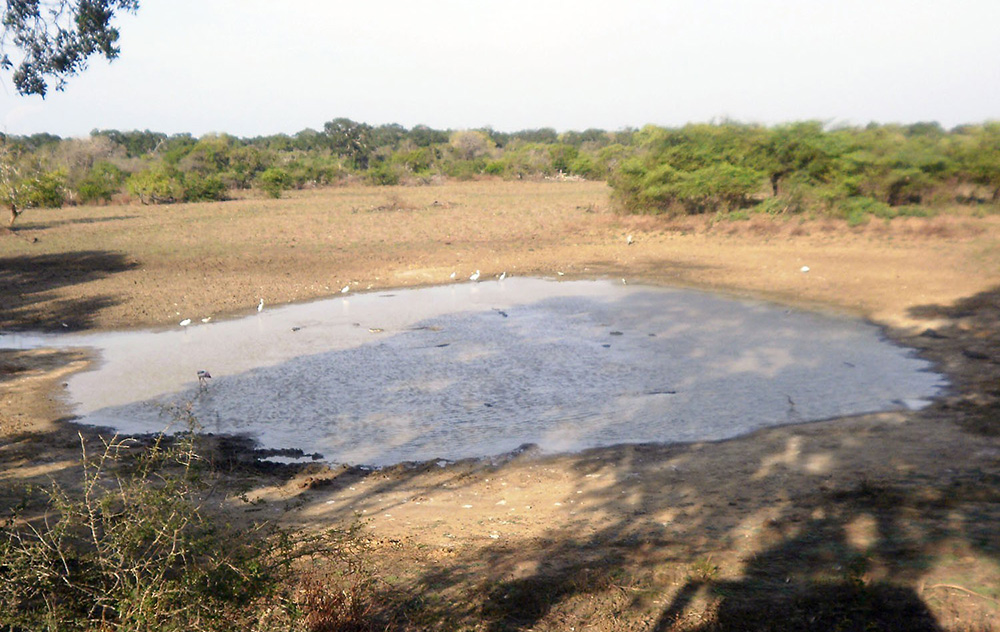
The water came quietly at first, a steady rise along the riverbanks, familiar to communities who have lived beside Sri Lanka’s great waterways for generations. But within hours, these same rivers had swollen into raging, unpredictable forces. The Kelani Ganga overflowed. The Nilwala broke its margins. The Bentara, Kalu, and Mahaweli formed churning, chocolate-brown channels cutting through thousands of homes.
When the floods finally began to recede, villagers emerged to assess the damage, only to be confronted by another challenge: crocodiles. From Panadura’s back lanes to the suburbs of Colombo, and from the lagoons around Kalutara to the paddy fields of the dry zone, reports poured in of crocodiles resting on bunds, climbing over fences, or drifting silently into garden wells.
For many, these encounters were terrifying. But to Sri Lanka’s top herpetologists, the message was clear: this is what happens when climate extremes collide with shrinking habitats.
“Crocodiles are not invading us … we are invading floodplains”
Sri Lanka’s foremost crocodile expert, Dr. Anslem de Silva, Regional Chairman for South Asia and Iran of the IUCN/SSC Crocodile Specialist Group, has been studying crocodiles for over half a century. His warning is blunt.
“When rivers turn into violent torrents, crocodiles simply seek safety,” he says. “They avoid fast-moving water the same way humans do. During floods, they climb onto land or move into calm backwaters. People must understand this behaviour is natural, not aggressive.”
In the past week alone, Saltwater crocodiles have been sighted entering the Wellawatte Canal, drifting into the Panadura estuary, and appearing unexpectedly along Bolgoda Lake.
“Saltwater crocodiles often get washed out to sea during big floods,” Dr. de Silva explains. “Once the current weakens, they re-enter through the nearest lagoon or canal system. With rapid urbanisation along these waterways, these interactions are now far more visible.”
- An adult Salt Water Crocodile (Crocodylus porosus) (Photo -Madura de Silva)
- Adult Mugger (Crocodylus plaustris) Photo -Laxhman Nadaraja
- A Warning sign board
- A Mugger holding a a large Russell ’s viper (Photo- R. M. Gunasinghe)
- Anslem de Silva
- Suranjan Karunarathna
This clash between wildlife instinct and human expansion forms the backdrop of a crisis now unfolding across the island.
A conflict centuries old—now reshaped by climate change
Sri Lanka’s relationship with crocodiles is older than most of its kingdoms. The Cūḷavaṃsa describes armies halted by “flesh-eating crocodiles.” Ancient medical texts explain crocodile bite treatments. Fishermen and farmers around the Nilwala, Walawe, Maduganga, Batticaloa Lagoon, and Kalu Ganga have long accepted kimbula as part of their environment.
But the modern conflict has intensified dramatically.
A comprehensive countrywide survey by Dr. de Silva recorded 150 human–crocodile attacks, with 50 fatal, between 2008 and 2010. Over 52 percent occurred when people were bathing, and 83 percent of victims were men engaged in routine activities—washing, fishing, or walking along shallow margins.
Researchers consistently emphasise: most attacks happen not because crocodiles are unpredictable, but because humans underestimate them.
Yet this year’s flooding has magnified risks in new ways.
“Floods change everything” — Dr. Nimal D. Rathnayake
Herpetologist Dr. Nimal Rathnayake says the recent deluge cannot be understood in isolation.
“Floodwaters temporarily expand the crocodile’s world,” he says. “Areas people consider safe—paddy boundaries, footpaths, canal edges, abandoned land—suddenly become waterways.”
Once the water retreats, displaced crocodiles may end up in surprising places.
“We’ve documented crocodiles stranded in garden wells, drainage channels, unused culverts and even construction pits. These are not animals trying to attack. They are animals trying to survive.”
According to him, the real crisis is not the crocodile—it is the loss of wetlands, the destruction of natural river buffers, and the pollution of river systems.
“When you fill a marsh, block a canal, or replace vegetation with concrete, you force wildlife into narrower corridors. During floods, these become conflict hotspots.”
Past research by the Crocodile Specialist Group shows that more than 300 crocodiles have been killed in retaliation or for meat over the past decade. Such killings spike after major floods, when fear and misunderstanding are highest.
“Not monsters—ecosystem engineers” — Suranjan Karunaratne
On social media, flood-displaced crocodiles often go viral as “rogue beasts.” But conservationist Suranjan Karunaratne, also of the IUCN/SSC Crocodile Specialist Group, says such narratives are misleading.
“Crocodiles are apex predators shaped by millions of years of evolution,” he says. “They are shy, intelligent animals. The problem is predictable human behaviour.”
In countless attack investigations, Karunaratne and colleagues found a repeated pattern: the Three Sames—the same place, the same time, the same activity.
“People use the same bathing spot every single day. Crocodiles watch, learn, and plan. They hunt with extraordinary patience. When an attack occurs, it’s rarely random. It is the culmination of observation.”
He stresses that crocodiles are indispensable to healthy wetlands. They: control destructive catfish populations, recycle nutrients, clean carcasses and diseased fish, maintain biodiversity, create drought refuges through burrows used by amphibians and reptiles.
“Removing crocodiles destroys an entire chain of ecological services. They are not expendable.”
Karunaratne notes that after the civil conflict, Mugger populations in the north rebounded—proof that crocodiles recover when given space, solitude, and habitat.
Floods expose a neglected truth: CEEs save lives—if maintained In high-risk communities, Crocodile Exclusion Enclosures (CEEs) are often the only physical barrier between people and crocodiles. Built along riverbanks or tanks, these enclosures allow families to bathe, wash, and collect water safely.
Yet Dr. de Silva recounts a tragic incident along the Nilwala River where a girl was killed inside a poorly maintained enclosure. A rusted iron panel had created a hole just large enough for a crocodile to enter.
“CEEs are a life-saving intervention,” he says. “But they must be maintained. A neglected enclosure is worse than none at all.”
Despite their proven effectiveness, many CEEs remain abandoned, broken or unused.
Climate change is reshaping crocodile behaviour—and ours
Sri Lanka’s floods are no longer “cycles” as described in folklore. They are increasingly intense, unpredictable and climate-driven. The warming atmosphere delivers heavier rainfall in short bursts. Deforested hillsides and filled wetlands cannot absorb it.
Rivers swell rapidly and empty violently.
Crocodiles respond as they have always done: by moving to calmer water, by climbing onto land, by using drainage channels, by shifting between lagoons and canals, by following the shape of the water.
But human expansion has filled, blocked, or polluted these escape routes.
What once were crocodile flood refuges—marshes, mangroves, oxbow wetlands and abandoned river channels—are now housing schemes, fisheries, roads, and dumpsites.
Garbage, sand mining and invasive species worsen the crisis
The research contained in the uploaded reports paints a grim but accurate picture. Crocodiles are increasingly seen around garbage dumps, where invasive plants and waste accumulate. Polluted water attracts fish, which in turn draw crocodiles.
Excessive sand mining in river mouths and salinity intrusion expose crocodile nesting habitats. In some areas, agricultural chemicals contaminate wetlands beyond their natural capacity to recover.
In Borupana Ela, a short study found 29 Saltwater crocodiles killed in fishing gear within just 37 days.
Such numbers suggest a structural crisis—not a series of accidents.
Unplanned translocations: a dangerous human mistake
For years, local authorities attempted to reduce conflict by capturing crocodiles and releasing them elsewhere. Experts say this was misguided.
“Most Saltwater crocodiles have homing instincts,” explains Karunaratne. “Australian studies show many return to their original site—even if released dozens of kilometres away.”
Over the past decade, at least 26 Saltwater crocodiles have been released into inland freshwater bodies—home to the Mugger crocodile. This disrupts natural distribution, increases competition, and creates new conflict zones.
Living with crocodiles: a national strategy long overdue
All three experts—Dr. de Silva, Dr. Rathnayake and Karunaratne—agree that Sri Lanka urgently needs a coordinated, national-level mitigation plan.
* Protect natural buffers
Replant mangroves, restore riverine forests, enforce river margin laws.
* Maintain CEEs
They must be inspected, repaired and used regularly.
* Public education
Villagers should learn crocodile behaviour just as they learn about monsoons and tides.
* End harmful translocations
Let crocodiles remain in their natural ranges.
* Improve waste management
Dumps attract crocodiles and invasive species.
* Incentivise community monitoring
Trained local volunteers can track sightings and alert authorities early.
* Integrate crocodile safety into disaster management
Flood briefings should include alerts on reptile movement.
“The floods will come again. Our response must change.”
As the island cleans up and rebuilds, the deeper lesson lies beneath the brown floodwaters. Crocodiles are not new to Sri Lanka—but the conditions we are creating are.
Rivers once buffered by mangroves now rush through concrete channels. Tanks once supporting Mugger populations are choked with invasive plants. Wetlands once absorbing floodwaters are now levelled for construction.
Crocodiles move because the water moves. And the water moves differently today.
Dr. Rathnayake puts it simply:”We cannot treat every flooded crocodile as a threat to be eliminated. These animals are displaced, stressed, and trying to survive.”
Dr. de Silva adds:”Saving humans and saving crocodiles are not competing goals. Both depend on understanding behaviour—ours and theirs.”
And in a closing reflection, Suranjan Karunaratne says:”Crocodiles have survived 250 million years, outliving dinosaurs. Whether they survive the next 50 years in Sri Lanka depends entirely on us.”
For now, as the waters recede and the scars of the floods remain, Sri Lanka faces a choice: coexist with the ancient guardians of its waterways, or push them into extinction through fear, misunderstanding and neglect.
By Ifham Nizam
-

 News6 days ago
News6 days agoWeather disasters: Sri Lanka flooded by policy blunders, weak enforcement and environmental crime – Climate Expert
-
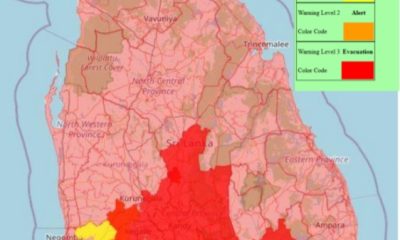
 Latest News7 days ago
Latest News7 days agoLevel I landslide RED warnings issued to the districts of Badulla, Colombo, Gampaha, Kalutara, Kandy, Kegalle, Kurnegala, Natale, Monaragala, Nuwara Eliya and Ratnapura
-
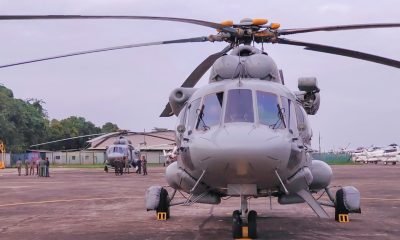
 Latest News7 days ago
Latest News7 days agoINS VIKRANT deploys helicopters for disaster relief operations
-
News3 days ago
Lunuwila tragedy not caused by those videoing Bell 212: SLAF
-

 Latest News4 days ago
Latest News4 days agoLevel III landslide early warnings issued to the districts of Badulla, Kandy, Kegalle, Kurunegala, Matale and Nuwara-Eliya
-

 News2 days ago
News2 days agoLevel III landslide early warning continue to be in force in the districts of Kandy, Kegalle, Kurunegala and Matale
-

 Features4 days ago
Features4 days agoDitwah: An unusual cyclone
-

 Latest News7 days ago
Latest News7 days agoWarning for Cyclonic storm “Ditwah”


